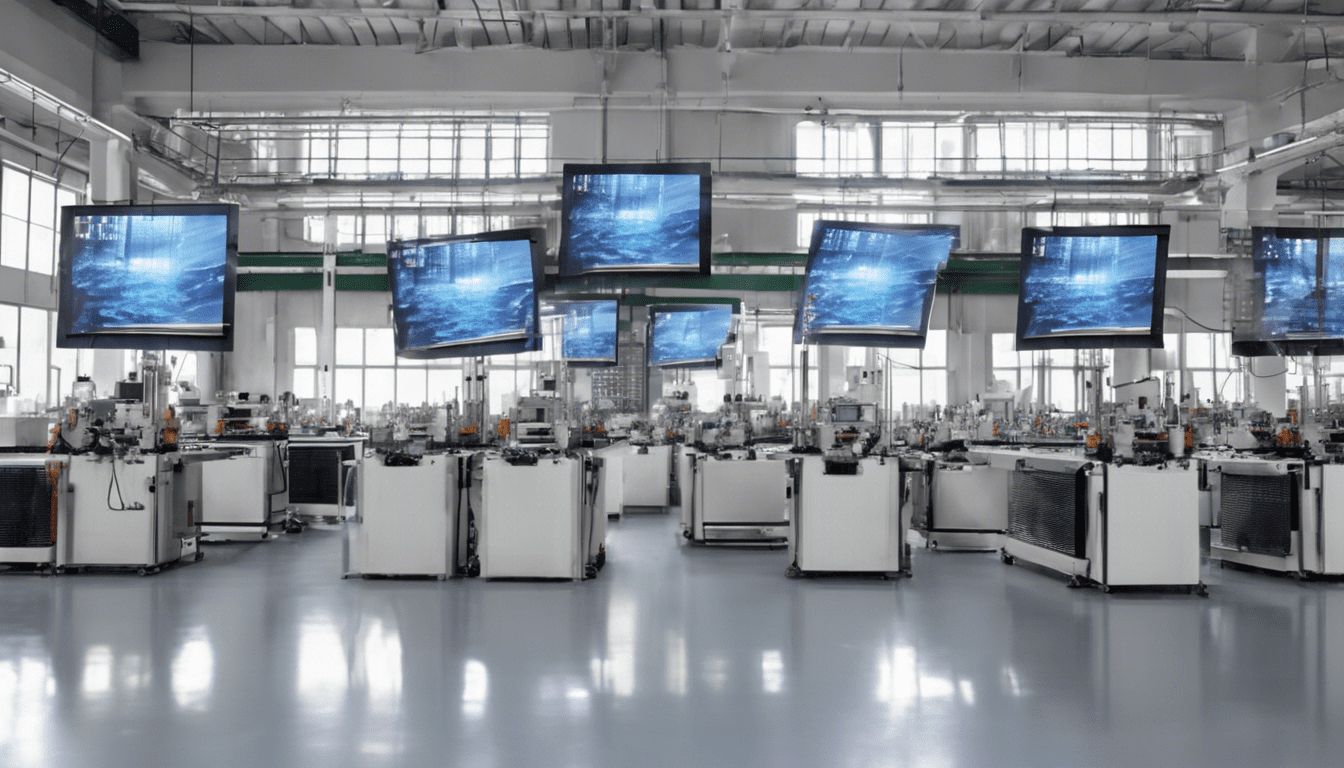Mastering the LED Display Screen Manufacturing Process: A Comprehensive Guide
Introduction: What is an LED Display Screen?
An LED Display Screen, also called a Light Emitting Diode display, is a flat panel display that uses an array of LEDs as pixels for a video display. Their ability to produce a high-resolution output has made them the preferred choice for everything from smartphone screens to large billboards. Understanding the manufacturing process behind these screens is key to appreciating the technology that powers our modern visual world.
Understanding the Raw Materials and Components
Before delving into the manufacturing process itself, it’s important to understand the key components and materials involved:
LED Chips:
These are semiconductor devices that emit light when electric current flows through them. They are the core of any LED display, converting electrical energy into light.
Printed Circuit Boards (PCBs):
PCBs provide the structural framework for assembling the LED modules. They house the LED chips and ensure proper electrical connection.
Housing and Encapsulation:
The housing materials, often made from plastic or metal, provide the external support and protection for the internal components. Encapsulation involves sealing the components to protect them from environmental factors.
Driving Circuits:
These circuits control the electrical current to each LED, ensuring that the desired image or video is correctly displayed.
Power Supply Units:
These units regulate and provide the necessary power to the entire display assembly. Reliable power supply is essential for the consistent operation of the display.
Stages in the LED Display Screen Manufacturing Process
1. LED Chip Manufacturing
The process begins with the creation of the LED chips:
Substrate Preparation: A substrate, typically made of sapphire, silicon, or gallium arsenide, is prepared to serve as the base for the LED chip.
Epitaxial Growth: Layers of semiconductor materials are grown on the substrate using methods such as Metal-Organic Chemical Vapor Deposition (MOCVD).
Photolithography: A process that uses light to transfer a geometric pattern onto the surface of the substrate, defining the features of the LED.
Etching: Chemical or plasma etching removes the unnecessary material, leaving behind the desired LED structures.
Metallization: Metal contacts are applied to the LED structures to allow for electrical connections.
2. Assembling the LED Modules
Once the individual LED chips are produced, the next step is assembling them into usable modules:
Mounting LEDs: The LED chips are precisely placed on the PCB using automated pick-and-place machines.
Wire Bonding: Fine wires are used to create electrical connections between the LEDs and the driving circuits.
Encapsulation: The modules are coated with a clear resin to protect them from environmental factors and to improve light emission efficiency.
3. Integration of Driving Circuits and Power Supply
In this stage, the driving circuits and power supply units are integrated into the modules:
Driving Circuit Connection: Driving circuits are connected to the LED modules, ensuring each LED can be individually controlled.
Power Supply Installation: The modules are connected to power supply units that ensure a stable and reliable power source.
4. Quality Control and Testing
Quality control is a critical part of the process to ensure each display screen meets high standards:
Initial Testing: Each LED module undergoes preliminary testing to check for functionality and brightness levels.
Calibration: The modules are calibrated to ensure uniform color and brightness across the display.
Environmental Testing: Modules are subjected to various environmental tests, including temperature and humidity tests, to ensure durability.
Final Inspection: A thorough final inspection is conducted to check for any defects or inconsistencies.
Cutting-Edge Techniques in LED Display Manufacturing
In recent years, several advanced techniques have been introduced to improve the efficiency and quality of LED display manufacturing.
Chip-on-Board (COB) Technology:
A method where the LED chips are directly placed and bonded onto the PCB. This technique offers higher efficiency, better heat dissipation, and allows for more compact designs.
Surface Mount Technology (SMT):
A method for producing electronic circuits where components are mounted or placed directly onto the surface of PCBs. SMT allows for smaller and more lightweight LED displays.
3D Printing in LED Manufacturing:
3D printing offers a variety of applications such as the creation of customized housing and structural components. It enhances the flexibility and speed of the manufacturing process.
Common Challenges in the LED Display Screen Manufacturing
Heat Management:
Effective heat dissipation is crucial to maintain the performance and longevity of LED displays. Advanced thermal management solutions are often required.
Color Uniformity:
Achieving uniform color output across the entire display can be challenging. Calibration and high-quality LED chips are crucial for consistency.
High Manufacturing Costs:
The cost of raw materials and advanced manufacturing technologies make the production process expensive. However, ongoing innovations are gradually reducing these costs.
Future Trends in LED Display Screen Manufacturing
Micro-LED Technology:
Micro-LEDs are smaller and more efficient than traditional LEDs. They offer better brightness, higher resolution, and longer lifespans, potentially transforming the LED display market.
Flexible Displays:
Flexible LED displays are emerging as a groundbreaking technology, allowing screens to be bent and shaped as needed. Applications range from wearable devices to innovative advertising mediums.
Increased Automation:
Automation is playing an ever-increasing role, with robotics and AI being used to streamline and improve the precision of the manufacturing process. This leads to increased production speeds and reduced human error.
Conclusion: The Significance of the LED Display Manufacturing Process
The LED display screen manufacturing process is a complex and intricate journey involving multiple stages and cutting-edge technologies. Understanding this process not only highlights the marvels of modern engineering but also emphasizes the continuous innovation required to meet the increasing demands for high-quality, versatile display solutions. As technology advances, the potential for even more impressive developments in LED displays continues to grow, promising a brighter and more visually stunning future.

